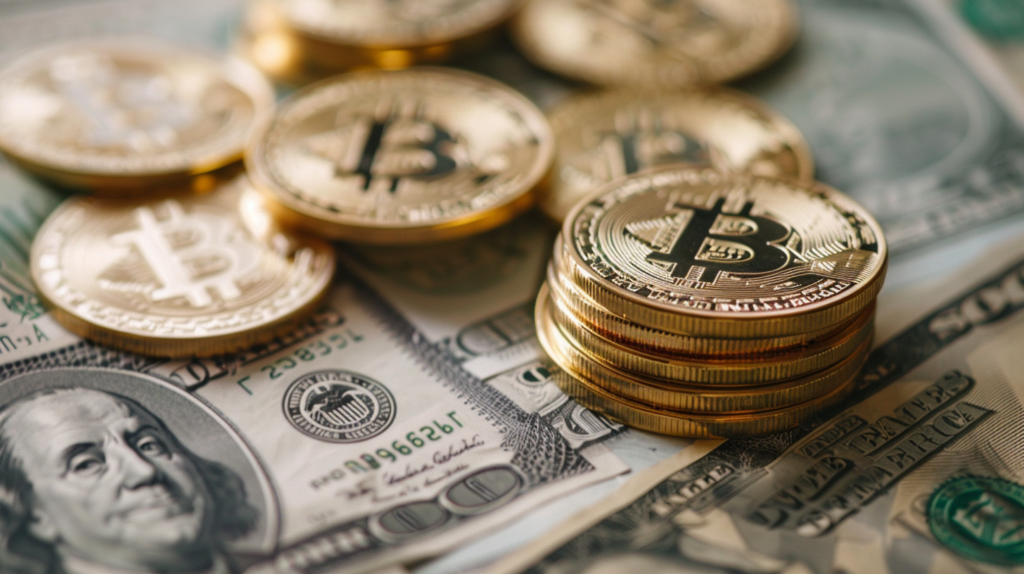What is Stablecoin? The Latest Premier Guide 2024?
What is Stablecoin?
When we think of cryptocurrencies, we often don’t associate them with stability due to their potentially large fluctuations in value. This makes them challenging to use in everyday life.
This is why we need something not controlled by a single authority and whose value does not frequently change.
Stablecoins were created to address this issue! Their goal is to maintain consistent value so that investors have a safe place to store funds without worrying about the massive price changes seen with Bitcoin and other cryptocurrencies. They are pegged to real-world assets (usually the US dollar or gold) to maintain their value stability.
Tether (USDT) is the first and most valuable stablecoin, with a market cap of $72.5 billion. Currently, there are over 200 stablecoins in use, with a total daily transaction volume of about $245 billion.

History of Stablecoin
The idea of stablecoins was born in 2014 under the efforts of two influential blockchain figures, Charles Hoskinson and Dan Larimer. They introduced BitUSD on the BitShares blockchain, marking the birth of the first stablecoin.
What set BitUSD apart was that it was backed by BitShares (BTS) tokens and further secured by various cryptocurrencies held in smart contracts as collateral. This innovative approach aimed to combine the security and decentralization of cryptocurrencies with the price stability of fiat money.
Let’s consider stablecoins as the digital version of familiar currency. USDC (USD Coin) is an example from real life! 1 USDC is designed to be worth close to 1 US dollar. Thus, having 10 USDC is akin to having 10 digital dollars, but with consistent value.
Essentially, the emergence of stablecoins was to address the issue of price volatility in the crypto world, addressing concerns over unpredictable price fluctuations.
Why are Stablecoins Increasingly Popular?
The growing popularity of stablecoins can be attributed to several compelling reasons:
- Facilitate Cross-Border Transactions: Stablecoins enable users to remit money to friends or family abroad using just one cryptocurrency wallet, eliminating the complexity of multiple foreign bank accounts.
- Direct Peer-to-Peer Transfers: Stablecoins facilitate direct peer-to-peer digital transfers, eliminating the need for intermediary institutions. This lowers fees, shortens transfer times, and enhances privacy.
- Indispensable Part of Decentralized Finance (DeFi): Stablecoins are a fundamental part of the decentralized finance (DeFi) world, providing the required stability for various DeFi applications.
- Tether (USDT): Tether is the most widely traded cryptocurrency asset, primarily used for blockchain-based remittances.
- Seamless Conversion from Fiat to Cryptocurrency: Stablecoins provide a convenient bridge for converting traditional fiat money into cryptocurrencies.
- Risk Mitigation for Traders: Traders often turn to stablecoins to protect their gains after closing positions, thus reducing the risk of market volatility.
Stablecoins are unique in the cryptocurrency world because, unlike other digital assets with significant price fluctuations, they aim to maintain a stable value. But how do they achieve this stability? Let’s explore three key methods:
- Pegging: Stablecoins are pegged to the value of a selected asset.
- Collateralization: Some stablecoins are fully collateralized, meaning they hold reserves of the asset to which they are pegged.
- Issuance and Redemption: Stablecoins can be issued or minted by a central entity or through decentralized algorithms.
Types of Stablecoin
Common types of stablecoins include:
- Fiat-backed Stablecoins: They are backed by fiat currencies like the US dollar, for example, Tether, PAXOS Standard, and USD Coin.
- Commodity-backed Stablecoins: They are pegged to the value of specific commodities, such as gold, silver, or other precious metals. PAX Gold, DigixDAO, and Tether Gold are prime examples.
- Crypto-backed Stablecoins: They are backed by cryptocurrencies and have protocols in place to protect their value from volatility. The most typical example is the DAI token, a stablecoin backed by Ether and pegged to the value of the US dollar.
- Algorithmic Stablecoins: They maintain the price of stablecoins through controlling supply using algorithms, similar to how central banks maintain currency stability.
The Perfect Choice without Risks
Unlike unstable cryptocurrencies, which can experience drastic price fluctuations, stablecoins offer higher stability and security. They are also more transparent, convenient, and cost-effective.
Stablecoins were initially used by traders and investors as a backup plan to protect their funds during market crashes, as they allow for a secure and stable decentralized system without being affected by extreme fluctuations.
Top Stablecoins in 2024
- USDT (Tether): USDT is a stablecoin pegged to the US dollar, maintaining a 1:1 value. It is favored by traders for its reliability.
- USDC: Like USDT, USDC is pegged to the US dollar at a 1:1 ratio. It is an ERC-20 token built on the Ethereum blockchain.
- DAI: DAI is a decentralized stablecoin on the Ethereum blockchain, managed by the MakerDAO protocol. Although not pegged to any specific asset, it maintains stability through algorithmic mechanisms.
- BUSD: BUSD is a stablecoin issued by Binance, pegged 1:1 to the US dollar. It operates on both the Binance Chain and Binance Smart Chain networks.
Bottom Line
As stablecoin become more trustworthy, they can change how the financial sector uses digital assets, offering a great opportunity to transform the entire payment system.
Stablecoins are not just financial service contracts; they have the potential to completely change the mainstream adoption of digital assets in everyday life. Countries are exploring central bank digital currencies to enhance financial inclusion and reduce transaction costs. However, stablecoins are not without risks, prompting regulators to seek ways to ensure their safety.
The Biden administration plans to subject stablecoin issuers to regulations similar to those for banks. As stablecoins gain trust, they can reshape how the financial sector utilizes digital assets, providing a significant opportunity for the transformation of the entire payment system.